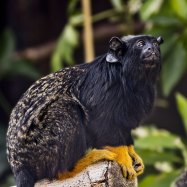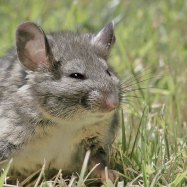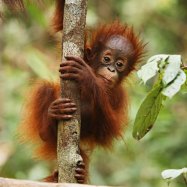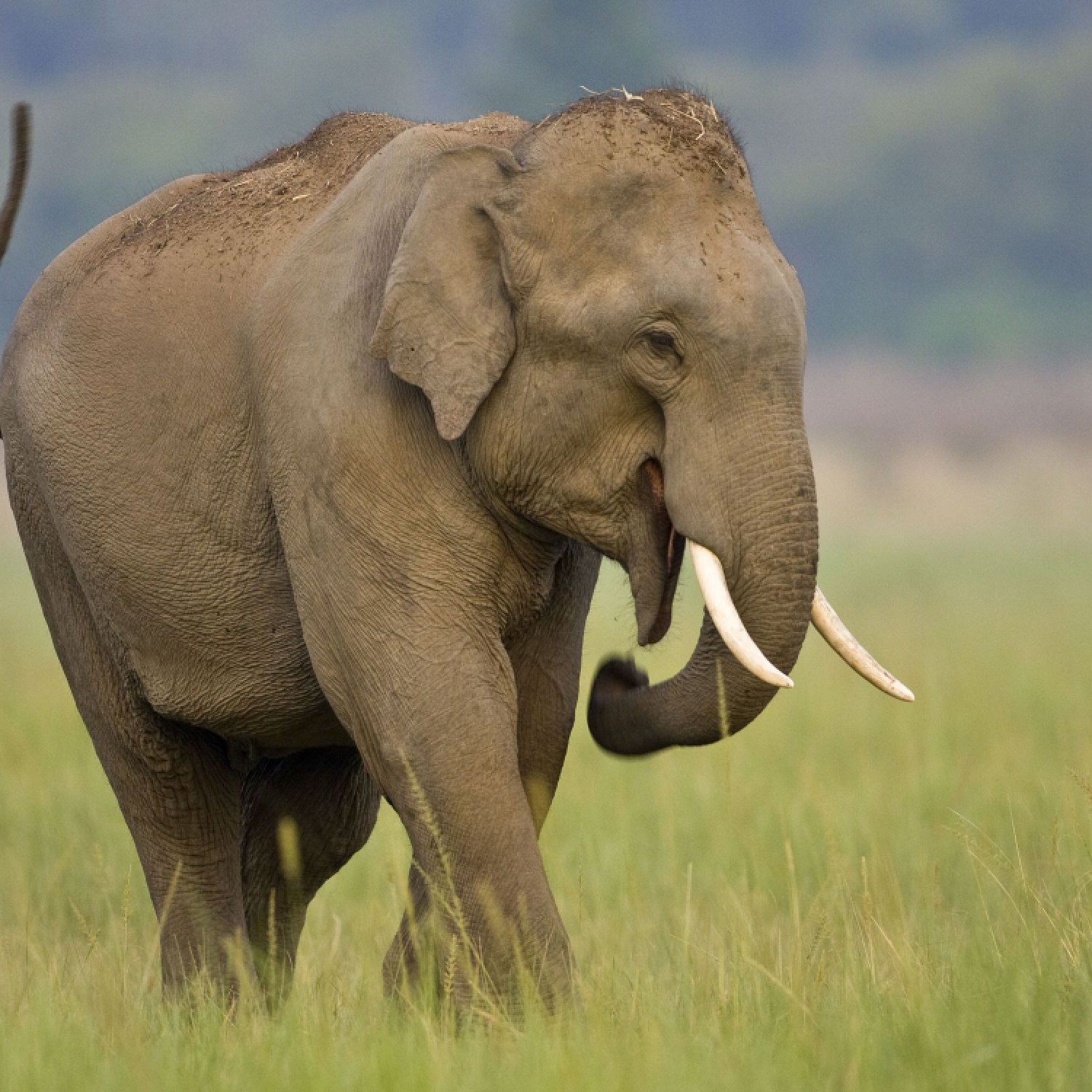
Asian Elephant
6 to 11 feet (1.8 to 3.4 meters)
The Asian Elephant is a majestic and iconic animal found in Asia. Standing at 6 to 11 feet tall and weighing up to 5.5 tons, it is the largest land animal in the region. Belonging to the Elephantidae family, it is known for its large and robust body shape. These gentle giants play an important role in the forest ecosystem, making them a vital animal to protect for the future. #AsianElephant #ProtectTheGiants #Conservation #AsiaAnimals
Animal Details Summary:
Common Name: Asian Elephant
Kingdom: Animalia
Habitat: Tropical and subtropical forest, grassland, and scrubland
The Majestic Asian Elephant – A Gentle Giant of the Forests
The sun rises over the lush green forests of Asia, and as the gentle wind rustles through the trees, the symphony of nature begins. In this symphony, there is one majestic creature that stands out – the Asian Elephant. With its large and robust body, gray coloration, and a long trunk or proboscis, the Asian Elephant is not only a symbol of strength and might, but also a gentle giant of the forests.Scientifically known as Elephas maximus, the Asian Elephant is a species of the animal kingdom, Animalia Asian Elephant. Belonging to the phylum Chordata, class Mammalia, order Proboscidea, and family Elephantidae, this magnificent creature has captivated the hearts and minds of humans for centuries.
Habitat and Distribution
The Asian Elephant is a native of Asia, with its geographical distribution covering countries like India, Nepal, Bhutan, Bangladesh, Myanmar, Thailand, Laos, Cambodia, Vietnam, Malaysia, Indonesia, and Borneo. It has adapted to various habitats, including tropical and subtropical forests, grasslands, and scrublands. This wide distribution and adaptability make the Asian Elephant one of the most widespread and diverse species of elephant in the world.
Feeding and Diet
As with all elephants, the Asian Elephant is a herbivore, which means its diet consists mainly of plants and vegetation. These gentle giants are known to consume up to 330 pounds (150 kilograms) of food every day, making them one of the biggest eaters in the animal kingdom. Their diet includes tree barks, leaves, twigs, fruits, and roots, which they forage for using their long and agile trunks.
Body Shape and Coloration
The unique body shape and coloration of the Asian Elephant make it stand out from other species. Standing at a height of 6 to 11 feet (1 Acadian Flycatcher.8 to 3.4 meters) and weighing up to 11,000 pounds (5,000 kilograms), the Asian Elephant is a sight to behold. Its body is large and robust, with a hump on its back and a sloping back towards its tail.
Its thick, wrinkled skin is usually gray in color, but it can also have patches of pink or brown. However, these colors fade as the elephant ages, and it may become completely gray in color. The skin of an elephant is not just for protection, but it also regulates their body temperature and protects them from the sun.
The Unique Trunk
One of the most distinctive features of the Asian Elephant is its long trunk, also known as a proboscis. This versatile appendage has multiple uses, including breathing, smelling, drinking, picking up objects, and communicating with other elephants. It is a unique feature that sets them apart from all other animals on the planet.
Cultural Significance
The Asian Elephant holds a special place in the hearts and culture of many Asian countries. It has been a part of human civilizations for thousands of years, playing a significant role in religious ceremonies, festivals, and even warfare. In countries like India, the elephant is considered a sacred animal, and it is often worshipped as a representation of the Hindu god, Ganesha.
Besides its cultural significance, the Asian Elephant has also been used for labor purposes, such as logging and agriculture. However, with the emergence of modern technology and machinery, these practices have significantly reduced, and the focus has shifted towards conservation and protection of these gentle giants.
Conservation Status
Despite being a revered and beloved animal, Asian Elephants are facing numerous threats to their survival. Habitat loss, poaching and illegal trade, and human-elephant conflicts are some of the greatest challenges faced by this species.
As their natural habitats continue to be destroyed for agriculture and urbanization, Asian Elephants are often forced to venture into human settlements, resulting in conflicts. This leads to loss of lives on both sides, and it also causes severe psychological distress to the elephants as they are highly social and emotional beings.
Moreover, poaching and illegal trade of elephant ivory and body parts still exist, despite strict laws and regulations. These activities not only harm the elephants, but they also fund other illegal activities like terrorism and organized crime.
Conservation Efforts
Fortunately, there are many organizations and conservation efforts dedicated to protecting the Asian Elephant. These include the World Wildlife Fund (WWF), International Union for Conservation of Nature (IUCN), and Asian Elephant Specialist Group (AsESG). These organizations work towards protecting the habitats of Asian Elephants, mitigating human-elephant conflicts, and raising awareness about their importance and threats.
Countries like India have also taken significant steps towards elephant conservation by creating protected areas and corridors for their safe movement. Additionally, there have been efforts to create alternative livelihoods for communities living near elephant habitats, reducing dependence on the forests and mitigating potential conflicts.
The Future of the Asian Elephant
Despite the ongoing efforts to protect and conserve the Asian Elephant, their future remains uncertain. According to the IUCN Red List, the species is considered endangered, and their population is declining at an alarming rate. Immediate and long-term actions must be taken to secure their survival and prevent their extinction.
As responsible and compassionate beings, it is our duty to educate ourselves and others about the importance of conserving the Asian Elephant and taking steps to protect their habitats. We must support organizations and efforts working towards their conservation, and refrain from any practices that may harm them. Let us not forget that these gentle giants have been a part of our world for centuries, and without them, our forests and ecosystems will never be the same.
In Conclusion
As the sun sets over the forests of Asia, the symphony of nature comes to an end, and the Asian Elephant retreats into the safety of its herd. These magnificent creatures have a significant role to play in maintaining the balance of our fragile ecosystems, and it is our responsibility to ensure their survival. Let us protect and cherish the Asian Elephant, a gentle giant and a symbol of strength and resilience.

Asian Elephant
Animal Details Asian Elephant - Scientific Name: Elephas maximus
- Category: Animals A
- Scientific Name: Elephas maximus
- Common Name: Asian Elephant
- Kingdom: Animalia
- Phylum: Chordata
- Class: Mammalia
- Order: Proboscidea
- Family: Elephantidae
- Habitat: Tropical and subtropical forest, grassland, and scrubland
- Feeding Method: Herbivore
- Geographical Distribution: India, Nepal, Bhutan, Bangladesh, Myanmar, Thailand, Laos, Cambodia, Vietnam, Malaysia, Indonesia, and Borneo
- Country of Origin: India
- Location: Asia
- Animal Coloration: Gray
- Body Shape: Large and robust
- Length: 6 to 11 feet (1.8 to 3.4 meters)
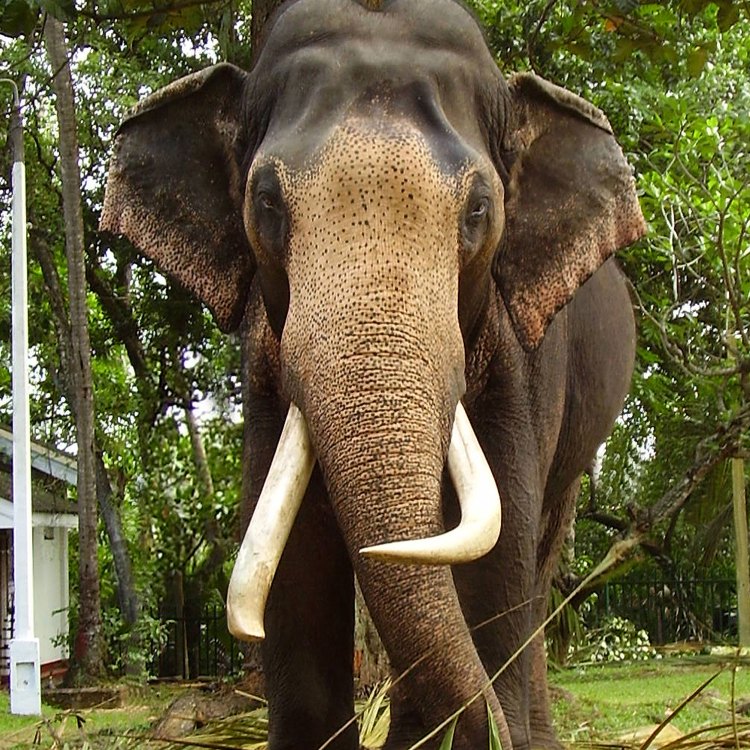
Asian Elephant
- Adult Size: Up to 10 to 13 feet (3 to 4 meters) in height and 6,000 to 12,000 pounds (2,700 to 5,400 kilograms) in weight
- Average Lifespan: 60 to 70 years
- Reproduction: Sexual
- Reproductive Behavior: Polygynous
- Sound or Call: Trumpeting
- Migration Pattern: Some populations may undertake seasonal migrations
- Social Groups: Matriarchal social structure with herds typically led by an older female
- Behavior: Intelligent, social, and highly adaptable
- Threats: Habitat loss, fragmentation, and degradation; poaching for ivory; human-elephant conflict
- Conservation Status: Endangered
- Impact on Ecosystem: Keystone species, contributes to forest health and diversity through seed dispersal and habitat modification
- Human Use: Tourism, logging, transportation, and cultural and religious significance
- Distinctive Features: Large size, long trunk, long tusks, large ears
- Interesting Facts: 1. Asian elephants are the largest living land animals in Asia. 2. They use their trunks for breathing, drinking, feeding, and communication. 3. Asian elephants have a highly developed social structure and show strong family bonds. 4. They are important cultural symbols in many Asian countries. 5. The population of Asian elephants is declining due to various threats, including habitat loss and poaching.
- Predator: No natural predators
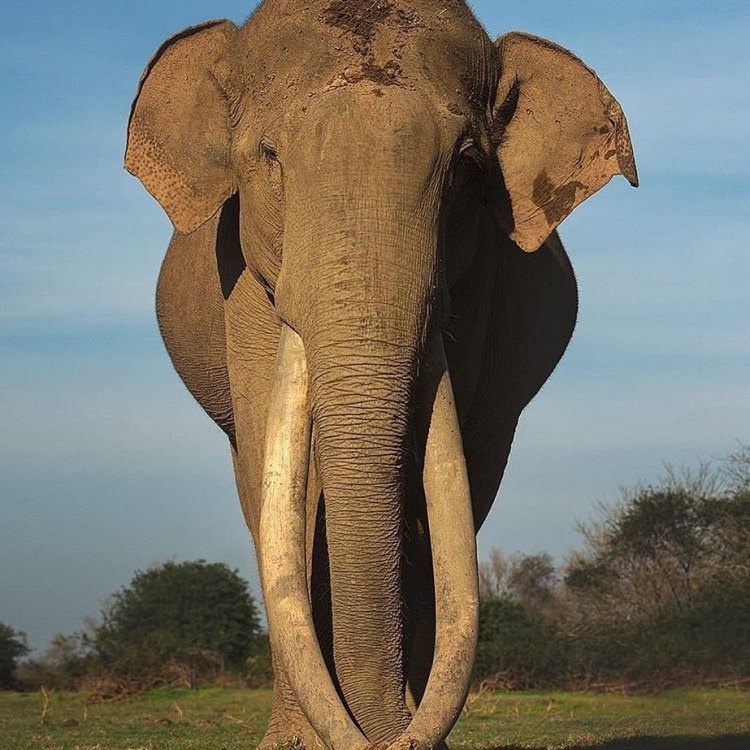
Elephas maximus
The Fascinating World of the Asian Elephant
The magnificent and majestic Asian elephant, scientifically known as Elephas maximus, is one of the most iconic and intriguing animals on our planet. With their impressive size, intelligence, and strong social bonds, these gentle giants have captured the hearts and imagination of people for centuries. From their significant role in cultures and ecosystems to the challenges they face in the wild, there is so much to discover about these incredible creatures.Let's journey into the world of the Asian elephant and uncover some of its most unique features, behavior, and significance PeaceOfAnimals.Com.
Size and Lifespan
First and foremost, the Asian elephant is known for its impressive size. These massive animals can reach up to 10 to 13 feet (3 to 4 meters) in height and weigh between 6,000 to 12,000 pounds (2,700 to 5,400 kilograms). It is the largest living land animal in Asia, and the second-largest after its African cousin.But while their size is undoubtedly impressive, what's even more remarkable is their lifespan. Asian elephants can live up to 60 to 70 years, making them one of the longest-living mammals on Earth. With such a long lifespan, these animals have plenty of time to develop complex social structures and display fascinating behavior patterns.
Reproduction and Behavior
Like many other animals, the Asian elephant reproduces sexually, and they have a polygynous mating system. This means that one male will mate with multiple females within a breeding season.But their reproductive behavior is not the only fascinating aspect of their behavior Argentinosaurus. Asian elephants have a highly developed and intricate social structure. They live in matriarchal herds, typically led by an older female, also known as the matriarch. The matriarch plays a vital role in decision-making and protecting the herd, which can consist of up to 20 individuals.
Furthermore, elephants display strong family bonds, with the mothers and their calves forming a close relationship that lasts a lifetime. The herd also has a complex communication system that involves a wide variety of vocalizations, head gestures, and body postures. But one of the most iconic sounds associated with elephants is their trumpeting call, which can be heard up to 6 miles (9.6 kilometers) away.
Impressive Features
Apart from their size, there are several other distinctive features that make Asian elephants stand out. First and foremost, they have a long trunk, which is a fusion of the nose and upper lip. This trunk is an incredibly versatile tool and is used for many purposes, including breathing, drinking, feeding, and communication.Moreover, Asian elephants have long, curved tusks that are used for digging, foraging, and even as weapons for self-defense. Both male and female Asian elephants have tusks, but the males' tusks are generally larger and more curved than the females.
And let's not forget about their large ears, which serve multiple functions. Besides helping them hear, the ears also play a crucial role in regulating their body temperature. On hot days, elephants will flap their ears to cool themselves down, whereas on colder days, they will curl them up to retain heat.
Migratory Patterns and Adaptability
While some populations of Asian elephants are known to stay in a particular area, others may undertake seasonal migrations in search of food and water. They have a relatively low tolerance to extreme environments and depend on water sources to survive. However, their adaptability is impressive, and they can thrive in a variety of habitats, including forests, grasslands, and even cultivated areas.This adaptability is also reflected in their diet, as Asian elephants are considered generalist herbivores. They feed on a variety of plant species, including grasses, leaves, fruit, and bark.
Threats and Conservation Status
Unfortunately, the Asian elephant's adaptability and impressive lifespan can't protect them from the growing threats they face in the wild. Habitat loss, degradation, and fragmentation are the most significant threats to these animals' survival. As humans continue to expand and develop land for agriculture, infrastructure, and settlements, elephants' natural habitats are disappearing at an alarming rate.Moreover, there is the added danger of poaching for their ivory tusks. Despite trade bans and increased enforcement, elephant poaching still persists, with the illegal ivory trade being a significant contributor to the decline in their population.
As a result of these threats, the Asian elephant is listed as Endangered on the International Union for Conservation of Nature (IUCN) Red List of Threatened Species. According to the IUCN, there are only around 35,000 to 40,000 Asian elephants left in the wild, spread across 13 countries in Asia. This decline in their population has severe consequences for not only the species but also the surrounding ecosystems and communities.
The Keystone Species
One of the reasons why the Asian elephant's conservation is crucial is their significance as a keystone species. Keystone species are animals that play a critical role in maintaining the balance of an ecosystem. Elephants are considered keystone species because they contribute to forest health and diversity through seed dispersal and habitat modification.Elephants are known to eat a wide variety of plant species, and their waste also contains viable seeds. By moving from one location to another, elephants disperse these seeds and help in plant regeneration, which is essential for maintaining a diverse and healthy forest ecosystem.
Moreover, elephants also modify their habitats by uprooting and breaking trees and shrubs, which creates more open spaces for other plants to grow. These actions create a mosaic of open spaces and dense canopy, which further contributes to the diversity of ecosystems.
Human Use and Cultural Significance
For centuries, humans have been fascinated by these gentle giants, and they have played a vital role in different cultures and traditions. In countries like India and Thailand, elephants are considered sacred animals, and they are featured in many religious and cultural ceremonies and festivals.But apart from their cultural significance, elephants have also been used for various purposes by humans. In the past, they were used for transportation, agricultural work, and even warfare. Today, they are still used for tourism activities, such as elephant rides and shows, which unfortunately often involve harsh and cruel training methods.
In Conclusion
The Asian elephant is a captivating and awe-inspiring animal that has captured our imagination and hearts for centuries. From their impressive size and lifespan to their complex social behavior and contributions to ecosystems, there is so much to learn and appreciate about these magnificent creatures.But with their population declining at an alarming rate, it is essential to raise awareness and take action to protect these gentle giants. We must work towards creating a sustainable future where humans and elephants can coexist and thrive together. Because without these majestic animals, our world would never be the same.

The Majestic Asian Elephant – A Gentle Giant of the Forests
Disclaimer: The content provided is for informational purposes only. We cannot guarantee the accuracy of the information on this page 100%. All information provided here may change without prior notice.





